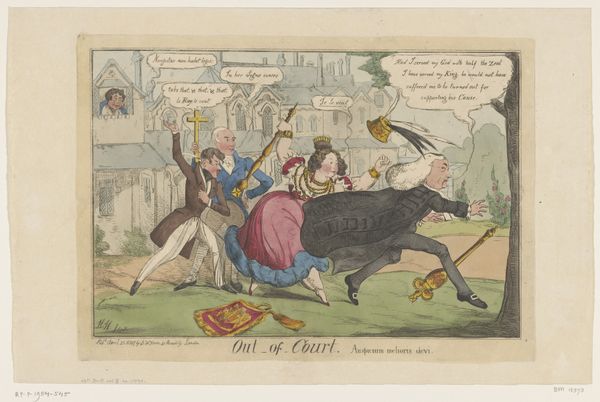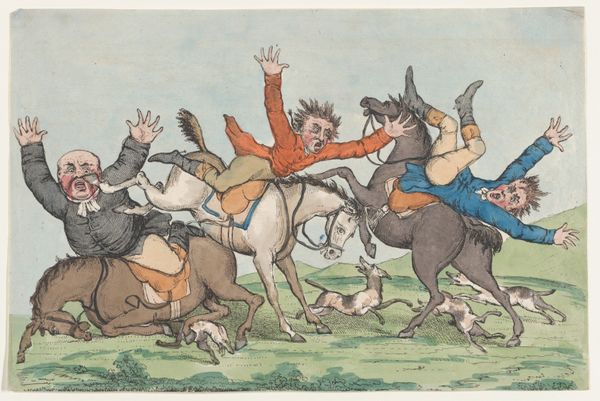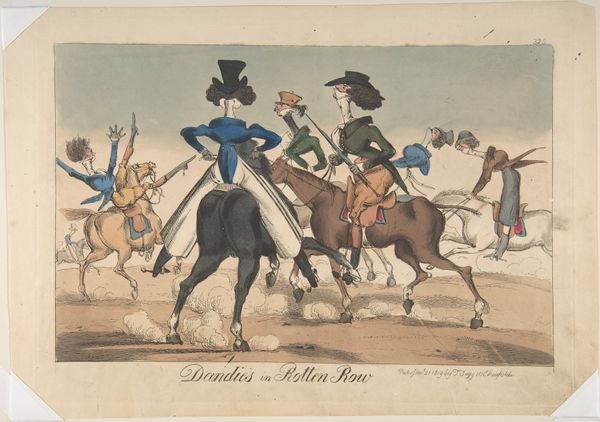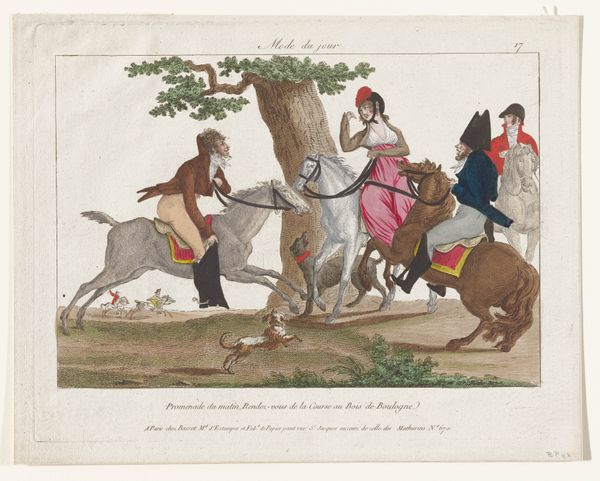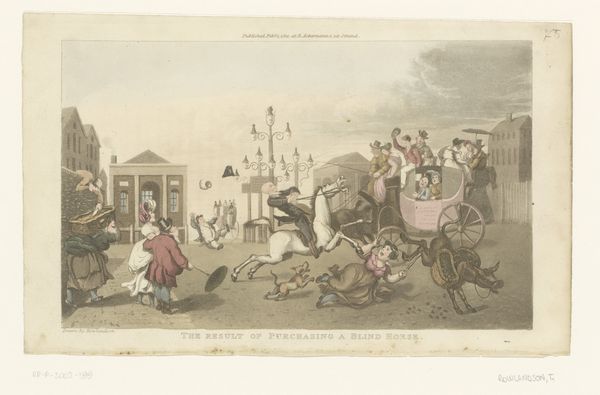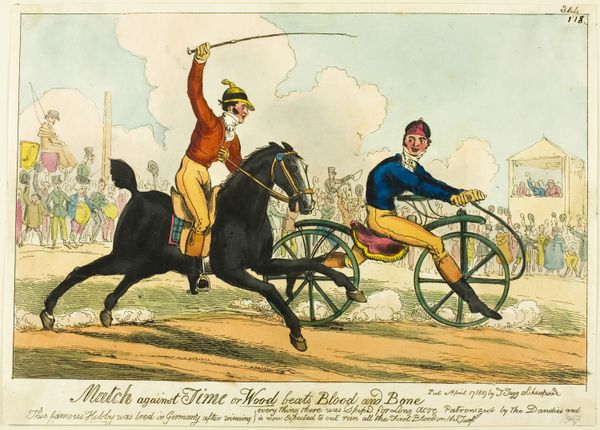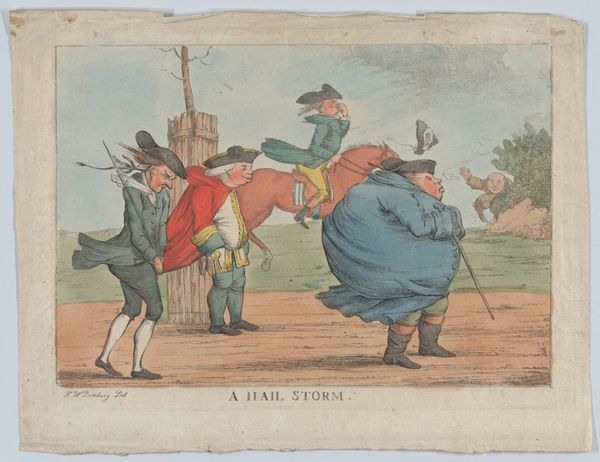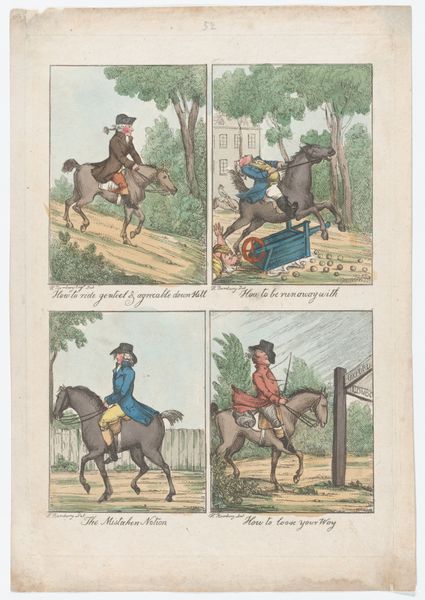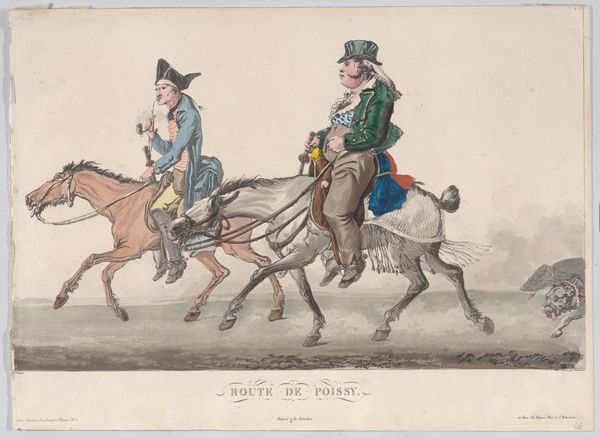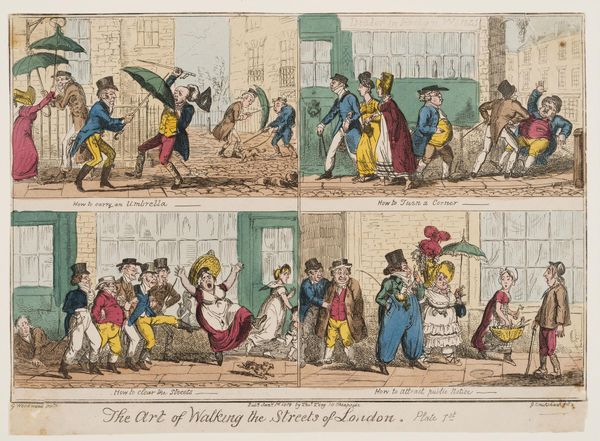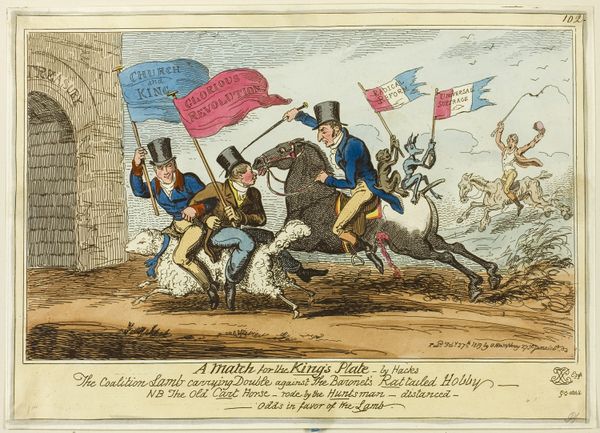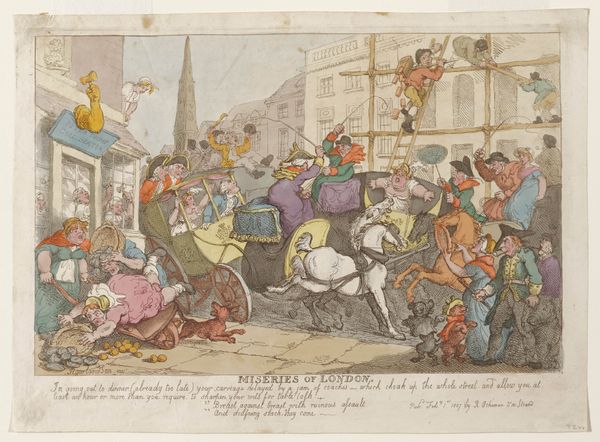
The Easter Hunt at Epping Forest, Plate Second 1805 - 1815
0:00
0:00
drawing, print, etching
#
drawing
# print
#
etching
#
caricature
#
figuration
#
romanticism
#
genre-painting
Dimensions: Sheet: 8 13/16 × 12 15/16 in. (22.4 × 32.9 cm)
Copyright: Public Domain
Curator: Here we have "The Easter Hunt at Epping Forest, Plate Second," a print and etching, by Henry William Bunbury, dating from between 1805 and 1815. Editor: Oh, what a delightfully chaotic scene! It’s like a freeze-frame from a silent comedy. Everyone looks utterly precarious, the horses especially…and what are those poor dogs doing? A hunt or a hazard, one wonders? Curator: Precisely, it's fascinating how Bunbury uses caricature to critique social class. We see wealthy gentlemen on horseback, presumably engaged in a traditional Easter hunt, but their exaggerated features and precarious postures suggest a deeper commentary on the excesses and follies of the elite. This connects to a broader understanding of Romanticism's preoccupation with social critique and moral commentary through satire. Editor: Absolutely, the Romantic spirit alright—if Romanticism threw a massive, muddy party! Look at the fellow clutching his horse for dear life, with that 'The Gallows' sign looming over. Is that symbolic, perhaps, or simply foreshadowing his inevitable tumble? I mean, I bet that horse’s having an existential crisis. Curator: The artist indeed subtly employs class-based social commentary; Epping Forest served as both a recreational space for the aristocracy and a site of contention over common land rights for working-class communities. This print underscores the complex interplay between leisure, power, and the politics of space in Georgian England, prompting a critical examination of who had access to and benefited from these so-called ‘hunts.' Editor: And isn’t it funny that we’re still kind of grappling with who gets to enjoy certain spaces, even today? Makes you think, this isn’t just an Easter egg hunt; it’s like, a hunt for privilege! A reminder of past inequalities, captured in what at first glance, seems like a light-hearted jaunt. Curator: A perspective that rightly brings our understanding full circle; that, despite its veneer of joviality, the artwork's context is important in interpreting issues of identity, class, and cultural traditions, adding much needed substance. Editor: Makes you wonder what the dogs think about all of this. They’re clearly having more fun! It’s always rewarding when a single piece can ignite such a sprawling landscape of contemplation.
Comments
No comments
Be the first to comment and join the conversation on the ultimate creative platform.

